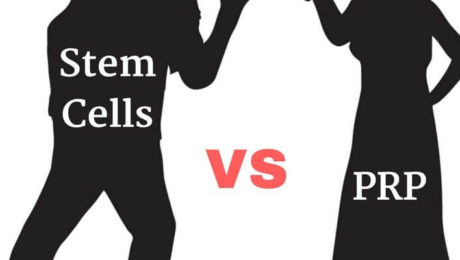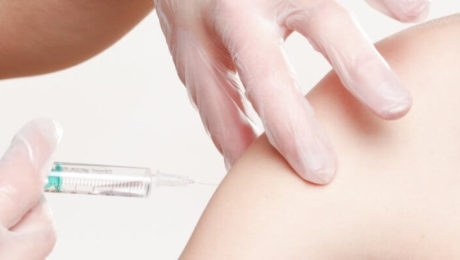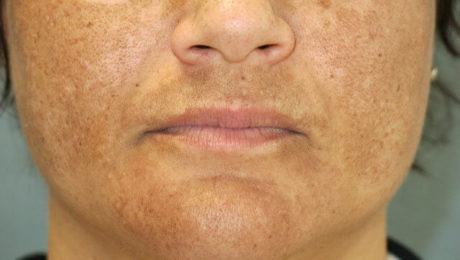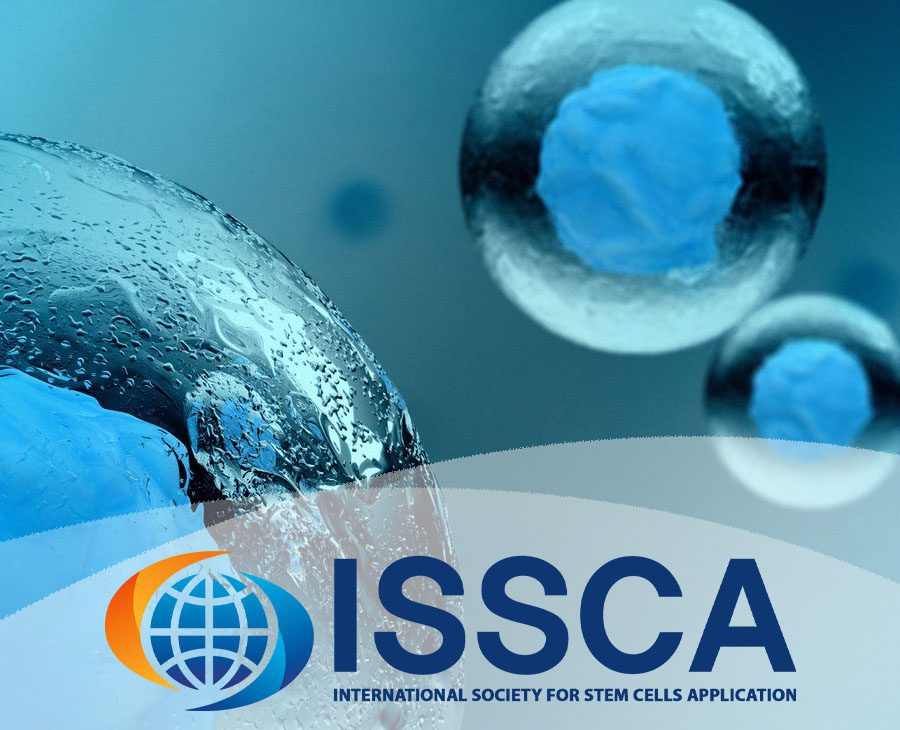Argentina, Buenos Aires. August 24. 2018
- Published in Past Events
What’s all the fuss about Regenerative Medicine?
Understanding Regenerative Medicine
Explore the concept of regenerative medicine and its role in healing various ailments using the body’s natural processes.
Benefits of Regenerative Medicine
Discover why patients are turning to regenerative medicine for non-invasive treatments with minimal side effects.
How Regenerative Medicine Works
Extraction and Application of Platelet-Rich Plasma (PRP)
Explain the process of obtaining PRP from a patient’s own blood or tissues and its application to promote healing.
Patient Experiences with Regenerative Medicine
Testimonials and Success Stories
Share real-life accounts of patients who have benefited from regenerative medicine treatments, highlighting their positive outcomes.
Future of Regenerative Medicine in Healthcare
Predictions and Trends
Discuss the potential growth and importance of regenerative medicine in future healthcare practices, likening its impact to groundbreaking medical advancements like penicillin.
Training and Implementation in Medical Practice
Integrating Regenerative Medicine
Explore how physicians are incorporating regenerative medicine into their practice through specialized training courses to enhance patient care.
Comparing Regenerative Medicine to Traditional Treatments
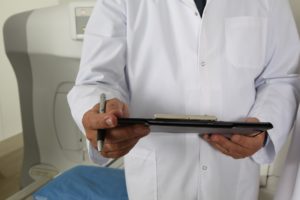
Advantages Over Conventional Medicine
Highlight the advantages of regenerative medicine over traditional medical approaches in terms of effectiveness and patient satisfaction.
Conclusion: Embracing Regenerative Medicine
Summarize the potential of regenerative medicine to revolutionize healthcare by offering effective, non-invasive treatments with fewer side effects.
References
Ensure comprehensive citations and references to support claims and information presented about regenerative medicine.
- Published in Blog
Platelet-Rich Plasma Vs Stem Cell Therapy: Who’s Bad?
Platelet-Rich Plasma (PRP) Therapy Explained
Learn how PRP utilizes natural healing mechanisms to enhance tissue repair and manage joint issues like arthritis.
Stem Cell Therapy: A Revolutionary Approach
Explore the potential of stem cell therapy in regenerative medicine and its applications in treating various orthopedic conditions.
Comparing PRP and Stem Cell Therapy
Mechanisms and Applications
Differentiate between PRP and stem cell therapy, highlighting their unique roles in healing and tissue regeneration.
Benefits of Platelet-Rich Plasma (PRP) Therapy
Advantages Over Stem Cell Therapy
Discuss the specific benefits of PRP, such as safety and simplicity, compared to more complex stem cell procedures.
Risks and Considerations with Stem Cell Therapy
Potential Drawbacks
Examine the risks associated with stem cell therapy, including concerns about uncontrolled growth and immune responses.
Conditions Treated with Stem Cell Therapy
Orthopedic Applications
Explore common orthopedic conditions effectively treated with stem cell therapy, including arthritis and joint injuries.
Conclusion: Choosing the Right Treatment Option
Making Informed Decisions
Summarize key points to help patients and healthcare providers make informed choices between PRP and stem cell therapy.
Future of Regenerative Technologies
Trends and Innovations
Look ahead to the future of regenerative medicine, discussing advancements and potential developments in both PRP and stem cell therapies.
References and Further Reading
Ensure comprehensive citations and references to support claims and information presented about PRP and stem cell therapies.
- Published in Blog
Platelet-Rich Plasma Stays Quietly Popular Despite Neglect
Introduction
FRIDAY, 27 APRIL 2018 / PUBLISHED IN BLOG
Fact: PRP Treatments in High Demand
According to research, PRP treatments are one of the most in-demand treatments available in healthcare. This is impressive considering the following:
- PRP is not supported by the medical industry. No big pharma funding on extensive research or marketing. No medical associations lobbying to increase its awareness.
- PRP is shunned by the insurance companies. No reimbursements from them. So getting patients to pay is difficult, especially for a treatment that’s relatively “unproven” like this.
- The cost of PRP treatments is actually rising. In 2006, you could get a PRP treatment for $450. Today it costs $800. The cheapest we’ve seen is $650. The prices are still robust as demand keeps up.
The Future Potential of PRP
We believe the best of PRP is not even here yet. We’re just one breakthrough study away from exploding into mainstream hospitals and clinics. We see the biggest growth in Platelet-Rich Plasma happening in Asia.
Strongly Based on Fundamental Healing Theory
The growth can be attributed to PRP’s fundamental healing property. More platelets. More growth factors and cytokines. And therefore more healing. It’s as simple as that. And no one can argue this fact.
Our body’s natural healing mechanism operates with 150,000/ul-350,000/ul platelets in blood. Using Platelet-Rich Plasma means this number is amplified by 3X to 5X. How can this not translate into better healing?
Believe it or not, the best orthopedic doctors use Platelet-Rich Plasma regularly.
PRP’s Applications and Effectiveness
PRP can be used to promote healing of injured tendons, ligaments, muscles, and joints and can be applied to various musculoskeletal problems. They conduct regular studies to test its effectiveness.
Key Study on PRP and Chronic Low Back Pain
One landmark study involved double-blind randomized controlled trials to see the effect of PRP on patients with chronic low back pain caused by torn discs. The study outcome says 60% of the patients felt significant improvements. Some were cured.
Different Variants of Platelet-Rich Plasma
So far, there are the following types of PRP variants:
- Plasma Rich in Growth Factors (PRGF)
- Plasma Rich in Platelets and Growth Factors (PRPGF)
- Platelet-Rich Plasma (PRP); Platelet Poor Plasma (PPP)
- Plasma Rich in Platelets and Rich in Leukocytes (LR-PRP)
- Plasma Rich in Platelets and Poor in Leukocytes (LP-PRP)
- Platelet-Rich Fibrin Matrix (PRFM)
All of them involve plasmapheresis — the two-stage centrifugation process to separate platelets from blood. However, what happens after that can be different. The industry hasn’t found its middle ground as to which variant to be standardized. We believe the confusion will clear up in 3-5 years.
Bio-Factors at Play in PRP
No matter which variant you end up using, the bio-factors at play are the following:
- Growth factors: TGF-B, PDGF, IGF-I, II, FGF, EGF, VEGF, ECGF
- Adhesive proteins: Fibrinogen, Fibronectin, Vitronectin, Thrombospondin-1
- Clotting & Anti-Clotting factors: Proteins, Antithrombin, Plasminogen, Proteases, Antiproteases
How Platelet-Rich Plasma Actually Works
Why is the treatment commonly used for wound healing and pain management? The answer is because the platelets’ main job is to aid coagulation, act as a biological glue, and support stem or primary cell migration. In addition, it also helps in restoring hyaluronic acid and accelerates the synthesis of collagen and glycosaminoglycans, increasing the cartilage matrix.
Not only that, the platelets are delivered in a clot, which means it can immediately act as a scaffold to enable the healing process. 95% of the bio-active proteins are released within 1 hour of injecting Platelet-Rich Plasma. The platelets continue to release growth factors for 7-10 days. Thus it’s recommended to re-inject PRP every 7 days.
Patient Perspective on PRP Costs
Why are patients coughing up their hard-earned money for this?
This reminds me of hundreds of thousands of PRP treatments paid from patients’ own pockets even though they’ve been paying for years to get covered by their respective insurance providers. In 2015, PRP costs were anywhere between $600 and $800 per site per treatment. And most patients go for repeated treatments. So why were they forking up their hard-earned money if the treatment was not working? Weren’t there any better alternatives under the “coverage” of their insurance provider? The answer is 1) the treatment works. 2) there’s nothing else out there that’s as natural and side-effect-free as PRP.
PRP and Osteoarthritis
Consider the case of osteoarthritis. 27 million Americans are impacted by it. 33.6% of people older than 65 are victims. All of them experience gradual degeneration of cartilage and bones — they lose roughly 5% of cartilage per year. Yet, our medical industry doesn’t have a fix to stop it.
However, when doctors started doing PRP treatments for their osteoarthritis patients, they found a large majority of them had no further cartilage loss. To me, it means we should make PRP treatments the default first-line treatment for osteoarthritis across the country.
PRP in Hair Loss and Cosmetic Applications
Another huge market is hair loss and cosmetic facial applications. I know there are many people who believe PRP doesn’t work for hair. Here’s what one of the Platelet-Rich Plasma studies found were the effect of the treatment on hair loss.
“Hair loss reduced and at 3 months it reached normal levels. Hair density reached a peak at 3 months (170.70 ± 37.81, P < 0.001). At 6 months and at 1 year, it was significantly increased, 156.25 ± 37.75 (P < 0.001) and 153.70 ± 39.92 (P < 0.001) respectively, comparing to baseline. Patients were satisfied with a mean result rating of 7.1 on a scale of 1-10. No remarkable adverse effects were noted.”
I’ll take that. That’s me getting PRP for hair.
PRP Market Growth
The PRP market is expected to hit $126 million in 2016. That number looks paltry. But that’s a 180% increase over the 2009 figure of $45 million.
Consider this. Just for osteoarthritis alone, if all the 27 million Americans receive 1 PRP shot a year at a conservative $400 per treatment, it would be a market of $10 billion. And that’s one condition out of the many that Platelet-Rich Plasma injections are proven to work.
PRP and Tennis Elbow
Another condition that PRP is known to work very well is Tennis Elbow. It affects on average 1% to 3% of the overall population. That number is as high as 50% among tennis players.
Insurance Coverage and PRP
Just getting Platelet-Rich Plasma covered by insurance will unleash the market big time and will help heal millions of patients naturally, more effectively.
Oh ya, that means the insurance companies will have to pay more. Why would they?
Potential Savings for Insurance Companies
HOWEVER, if this treatment could reduce further expensive intervention like surgery, then it may actually be a blessing for the insurance guys in terms of savings. One surgery avoided by a patient through the right intervention through PRP treatments will save the insurance companies at least $25,000. Now, that’s a win-win for both patients and insurance.
I believe it’s a matter of time before insurance companies start realizing their folly of not supporting this treatment.
PRP Still Considered “Unproven”
After all is said and done, it’s still “unproven.” The problem with PRP is that it can be used for just about everything, which is a good problem to have until healthcare officials (and insurance companies) start realizing that people are going to misuse it.
So it’s classified as unproven. The VAST scope of the treatment calls for urgent structure and guidelines. There are some 20+ conditions where researchers have found it “helps” in one way or another. It’s a daunting task to prove its efficiency in all the areas. Nevertheless, we’ll get there. Though we’ll need a lot of funding for that.
Need for Standardization
And yes, we need to standardize the procedure. As well as come up with optimized protocols for each condition. Someone needs to take initiative on that. We’re counting on independent doctors and medical institutions. The big pharma won’t jump in because what’s in it for them, right?
Simplicity and Accessibility of PRP
It’s so simple, you’d be an idiot not to try it. You only need a vacuum blood harvesting tube like what we offer here, a centrifuge with an adapter for the tube, pipettes, and 10ml ampules of 10% calcium chloride.
The only complexity comes from not following a standard PRP system. Because the final platelet count can depend on a variety of factors like the initial volume of blood, the technique used, and the relative concentration of WBC and/or RBC. As well as on the patient’s side, there are factors such as age.
- Published in Blog
The Growth Factor Showdown: Plasma Vs Fibrin
WEDNESDAY, 25 APRIL 2018 / PUBLISHED IN BLOG
Platelet-Rich Plasma (PRP) and Platelet-Rich Fibrin (PRF) have been the subject of numerous speculations regarding their efficacy in facilitating angiogenesis, hemostasis, osteogenesis, and bone growth. The primary reason these platelet products are effective is due to the growth factors they carry. Let’s delve into the specific roles of these growth factors in the healing process.
Growth Factors in Platelet-Rich Plasma
These growth factors play vital roles in PRP and contribute significantly to the healing process:
Platelet-Derived Growth Factor (PDGF)
Regulates cell growth and division, especially in blood vessels, making it crucial for blood vessel reproduction.
Transforming Growth Factor Beta (TGF-β)
Responsible for overall cell proliferation, differentiation, and various other cellular functions.
Fibroblast Growth Factor (FGF)
Plays a key role in wound healing and embryonic development, influencing the proliferation and differentiation of specialized cells and tissues.
Vascular Endothelial Growth Factor (VEGF)
Essential for vasculogenesis and angiogenesis, VEGF restores oxygen supply to cells when it is inadequate and helps create new blood vessels after injury.
Keratinocyte Growth Factor (KGF)
Found during the epithelialization phase of wound healing, KGF stimulates the formation of epithelium immediately after a wound or injury occurs.
Connective Tissue Growth Factor (CTGF)
Functions in cell adhesion, migration, proliferation, angiogenesis, skeletal development, and tissue wound repair.
Platelet-Rich Plasma Rules
A recent study suggests that PRP and its gelled cousin, PRF, differ significantly in the release of these growth factors, which can affect the healing outcome. The study concludes that:
PRP releases significantly higher proteins at earlier time points, which is beneficial for short-term effects.
PRF shows a continual and steady release of growth factors over a 10-day period, making it more beneficial for long-term healing.
Advantages of Platelet-Rich Fibrin Over Platelet-Rich Plasma
PRF has some notable advantages over PRP, including:
- It doesn’t require thrombin and anticoagulants.
- It results in better healing due to its slow polymerization process.
- It aids in hemostasis.
How Platelet-Rich Plasma Differs from Platelet-Rich Fibrin
Platelet-Rich Plasma is produced using a double spin method: a hard spin to separate red blood cells from everything else in the autologous blood, followed by a soft spin to separate the platelets and white blood cells, resulting in PRP, Platelet-Poor Plasma (PPP), and Red Blood Cells.
Platelet-Rich Fibrin is created using a newer method. After the first centrifugation, the middle layer is taken, containing fewer platelets but more clotting factors. This gradually forms into a fibrin network that traps cytokines and is then centrifuged again to result in PRF, a fibrin layer containing platelets and plasma.
What Matters in Healing
When it comes to accelerating healing, the immediate availability of growth factors and cytokines is crucial. PRP may be more effective in this regard due to its immediate release of growth factors, allowing for repeated injections for additional healing factors just days after the initial injection.
Conclusion
Platelet-derived products are still in their infancy. Despite their potential benefits, more research is needed to fully understand their capabilities. If you’re a physician using any or both of these products, we encourage you to share your experiences with us through our contact form.
- Published in Blog
Platelet-Rich Plasma For Breast Augmentation: How it works
FRIDAY, 20 APRIL 2018 / PUBLISHED IN BLOG
“You start out happy that you have no hips or boobs. All of a sudden you get them, and it feels sloppy. Then just when you start liking them, they start drooping.”
— Cindy Crawford
Just like men associate (some of) their masculinity with the shape and size of their muscles, women associate (some of) their femininity with the shape and size of their breasts. However, unlike muscles, exercise won’t help augment the size of breasts. Fortunately, there are various procedures available, and today, we’ll explore how Platelet-Rich Plasma (PRP) can aid in breast augmentation.
Platelet-Rich Plasma for Breast Augmentation
PRP and Breasts: The Incorrect Perception
Currently, traditional breast augmentation procedures like breast implant surgery and fat grafting are the most effective methods. However, the general public often misunderstands PRP’s role in breast augmentation. Here’s a typical conversation between a patient and a dermatologist:
Patient: “Hey, I heard about this thing called PRP, and I was told it’s just a couple of injections with stuff drawn from our own blood.”
Doctor: “Yeah, they are really good.”
Patient: “Really? You think so? I also heard they’re good for breast augmentation. Can you do it for me?”
This is usually followed by the doctor explaining how PRP is a healing tool, not an implant tool.
How Platelet-Rich Plasma for Breast Augmentation Works
PRP can be used in two primary ways for breast procedures:
Fat Transfer and Platelet-Rich Plasma for Breast Lift
Fat transfer involves taking unwanted body fat via liposuction from other parts of the body and processing it before injecting it into the upper part of the breast and cleavage area. This provides immediate enhancement. However, the sudden expansion can cause blood vessels to block, leading to sensitivity loss in some parts of the breasts or nipples.
To avoid this, it’s best to ensure sufficient collagen and growth factors are supplied. This is where PRP comes in. The doctor adds PRP, derived from the patient’s own blood, to the fat during processing. The end product, containing many blood-derived growth factors and collagen for skin rejuvenation, is then injected like a typical PRP injection. The result is firmer breasts with changes in size, skin texture, and breast shape, without sensitivity loss. Some call this procedure the Platelet-Rich Plasma Facelift. Results generally last from 9-18 months.
This procedure boosts the confidence of many women but is not recommended for those with:
- Extreme loss of volume
- Excessive sagging
- Previous breast implants
Only Platelet-Rich Plasma for Breast Rejuvenation
This procedure is purely for rejuvenation. It’s for women satisfied with their breast size but looking to rejuvenate the skin, restore fullness, and regain sensitivity. The process involves drawing 20ml of the patient’s blood, spinning it twice in a tabletop centrifuge, and then injecting it into the necessary areas. PRP injections not only enhance appearance but also produce new tissues, resulting in better cleavage and fullness.
Additional Perks
Some professionals believe that traditional breast implants by a board-certified plastic surgeon are the gold standard. However, natural methods like PRP are becoming the new gold standard. Unlike artificial implants, PRP does not require cutting into the breasts, which means no scars and no need for replacement after 10 or 20 years.
“It wasn’t just her beauty. It was the attitude in her smile, the tilt of her head, and the loving look in her eyes when she caught me sneaking a peek down her shirt.”
— John L. Monk, Kick
By structuring the article with H2 headings and enhancing readability, this version should be more engaging for readers and better optimized for search engines.
- Published in Blog
Platelet-Rich Plasma For Melasma — Will It Fade Forever?
WEDNESDAY, 18 APRIL 2018 / PUBLISHED IN BLOG
For most women, a tiny pimple on the face is enough to ruin their day or week. Even the slightest imperfection that may have a 1% chance of getting noticed by others can be distressing. For these women, melasma is their darkest nightmare. It’s a common issue, often resulting from sun exposure, that causes brown patches on the face. Unfortunately, these patches are often permanent.
The Typical Journey of Melasma Sufferers
If you’re suffering from melasma, the road to “recovery” usually looks like this:
- Hope for Natural Fading: You hope that it’ll fade away on its own.
- Home Remedies: Your friend suggests you try apple cider vinegar and lemon juice treatment.
- Dermatologist Visit: Slightly disappointed, you visit a dermatologist who’ll prescribe a bleaching cream (hydroquinone or similar).
- Full-on Disappointment: The treatment doesn’t work as expected.
- Research: You Google the hell out of the topic and feel overwhelmed by the information.
- Concealers and Makeup: Concealers and makeup become your best friends to cover the patches.
At this point, no one can convince you there is a treatment for getting rid of melasma. Trying more and more treatments only runs the risk of making the condition worse. So, what would you do?
Platelet-Rich Plasma for Melasma
What is Platelet-Rich Plasma (PRP)?
According to recent Turkish and Malaysian studies, Platelet-Rich Plasma is showing great promise for melasma. One of the good things about PRP for melasma is that it won’t make the condition worse, unlike IPL, Fraxel, or other treatments. It’s like getting a natural facial treatment with a whole lot of potential benefits, even if it doesn’t help cure melasma.
How Does PRP Work for Melasma?
PRP injections work by supplying growth factors to reduce pigmentation. Being an independent treatment with no downtime, it can be done in conjunction with conventional treatments for melasma to add and enhance effects. PRP contains more than 30 bioactive substances that play roles like increasing skin volume and adding new blood vessels.
Platelet-Rich Plasma with Microneedling
Combining PRP with Microneedling
This is the most common combination for Platelet-Rich Plasma therapy. The combination has produced results for a variety of skin pigmentation issues, making it a valuable option for melasma, especially when creams and peels haven’t helped. More importantly, PRP’s ability to stimulate collagen production in the area tightens the pores and makes your skin glow.
Why Platelet-Rich Plasma?
The Science Behind PRP
PRP is primarily a healing vehicle. It needs to be injected into the membrane below the skin. It works by supplying the underlying skin membrane with collagen and tenascin stimulated by the transforming growth factors in PRP. These growth factors also promote the formation of new blood vessels, sometimes resulting in the disappearance of spider veins.
The released growth factors (mainly platelet-derived growth factor (PDGF), epidermal growth factor (EGF), vascular endothelial growth factor (VEGF), fibroblast growth factor (FGF), and transforming growth factor-beta (TGF-ß)) stimulate the proliferation of fibroblasts and epidermal cells, and collagen synthesis. Additionally, TGF-ß has been proven to inhibit melanogenesis — or reverse skin pigmentation — the exact opposite effect of exposure to UV-B radiation.
Treatment Results and Maintenance
Typically, patients see excellent results with 2-3 PRP injections in the first 3 months. Clinical studies have shown that the effects maintain after 6 months. However, melasma is known to recur even after successful treatments. Therefore, you must take precautions by using sunscreen with broad-spectrum protection and an SPF of 30 or higher. Avoiding harsh skincare products is also essential as they can exacerbate melasma.
By structuring the article with H2 headings and optimizing readability, this version should be more engaging for readers and better optimized for search engines.
- Published in Blog
What’s True About Platelet-Rich Plasma For Stretch Marks?
MONDAY, 16 APRIL 2018 / PUBLISHED IN BLOG
Cindy is a career woman. When she became pregnant for the first time, she was torn between prioritizing her work and taking care of her growing body. To avoid drowning in that confusion, she kept herself busy with work all day while snacking during her free time. This led to rapid weight gain. Occasionally, her experienced sister would remind her to apply Bio Oil on her growing tummy before bed, but she was too exhausted to do it regularly. It wasn’t until after she delivered her baby that she realized her folly – her belly now looked like a road map.
What Works for Stretch Marks?
There are a variety of topical treatments, with those containing cocoa butter being trendy, but they hardly affect severe stretch marks. They perform better when used as preventive measures because fully developed stretch marks are rarely skin deep. The stretching occurs in the dermis layer underneath the surface. The inability of the epidermis to keep up with the stretching causes the appearance of deep roads of stretch marks.
One way to “cure” stretch marks, or at least reduce their appearance, is to make the skin surrounding the stretch marks more even with the stretch marks themselves. This can be achieved through various minimally invasive “scarring” technologies like microdermabrasion, microneedling, and CO2 fractional laser.
Platelet-Rich Plasma for Stretch Marks
How Platelet-Rich Plasma Works
Platelets can supply growth factors wherever healing is initiated. So unless healing is initiated or is still ongoing (which is not the case with fully developed stretch marks), the injected Platelet-Rich Plasma may not produce its excellent results.
That’s why in forums you can hear a lot of advice from doctors who claim Platelet-Rich Plasma can’t help stretch marks. In fact, that’d be the first thing I’d say if someone asked me. However, what if we could artificially initiate the healing? Not only in the outer epidermis layer, but also in the underlying dermis layer too? Now, that’s an excellent opportunity to put the growth factors in Platelet-Rich Plasma to good use, wouldn’t you agree?
PRP Microneedling for Stretch Marks
How PRP Microneedling Works
PRP microneedling involves swapping Vitamin C, used in traditional microneedling, with Platelet-Rich Plasma. This is traditionally called a Platelet-Rich Plasma facial because you’re essentially spreading blood components over your face. This is particularly effective for the face, but it can provide even better results for stretch marks.
Getting to the Root of the Problem
With microneedling, tiny holes are punched in both the outer epidermis layer and the inner dermis layer of the skin. These holes are so micro that they restore back to normal within minutes or hours. However, during the time they’re open, a healing response is triggered. Triggering a healing response in the inner dermis layer means there’s going to be some improvement in the stretch marks, as that’s where the source is. The procedure also removes unwanted, half-dead cells from the outer skin, causing the stretch marks to appear less deep.
Accelerated Healing with PRP
PRP accelerates the healing response triggered by the microneedles, and it must do so during the time the holes are open. So immediately after the microneedling, a concentrated gel of PRP is applied and massaged well enough for the platelets to seep through the holes. These platelets first stop the micro-bleeding caused by the microneedles, and then the growth factors in the platelets trigger the production of a substantial amount of collagen. Collagen’s primary role is the replacement of dead skin cells, which means it’ll replace all the dead, broken, and torn skin cells in the entire area. The result is fresh new skin in the areas of the stretch marks, causing them to shrink in size and look more rejuvenated.
Why Platelet-Rich Plasma?
The Healing Power of PRP
Platelet-Rich Plasma is a powerful healing component, initially discovered in 1987. Surgeons found that autologous platelet-rich plasma and red blood cell concentrates diminish the cost of healing for cardiac surgery, meaning faster, efficient, and natural healing for patients. The same force that heals cardiac surgery can also rejuvenate our skin or any other organ in the body. We’re only beginning to uncover the healing potential found in Platelet-Rich Plasma. Studies show that PRP can even heal bones.
PRP vs. Topical Products
It’d be foolish not to use such a potent, natural healing agent for skin rejuvenation purposes. Microneedling seems to be just what Platelet-Rich Plasma needs to exercise its healing powers. It’s much better than stockpiling topical products that might “cure” stretch marks, such as scar creams, retinoids, and peptides.
The Sooner, the Better
Studies show platelets are more efficient when introduced right after wound initiation. The same applies to stretch marks. As soon as you see those marks, it’s better to head straight to the clinic and get a Platelet-Rich Plasma + microneedling session to heal them. The longer you wait, the harder it gets to remove them. So stop experimenting with topical creams—they’re meant to be used as preventive measures.
- Published in Blog





